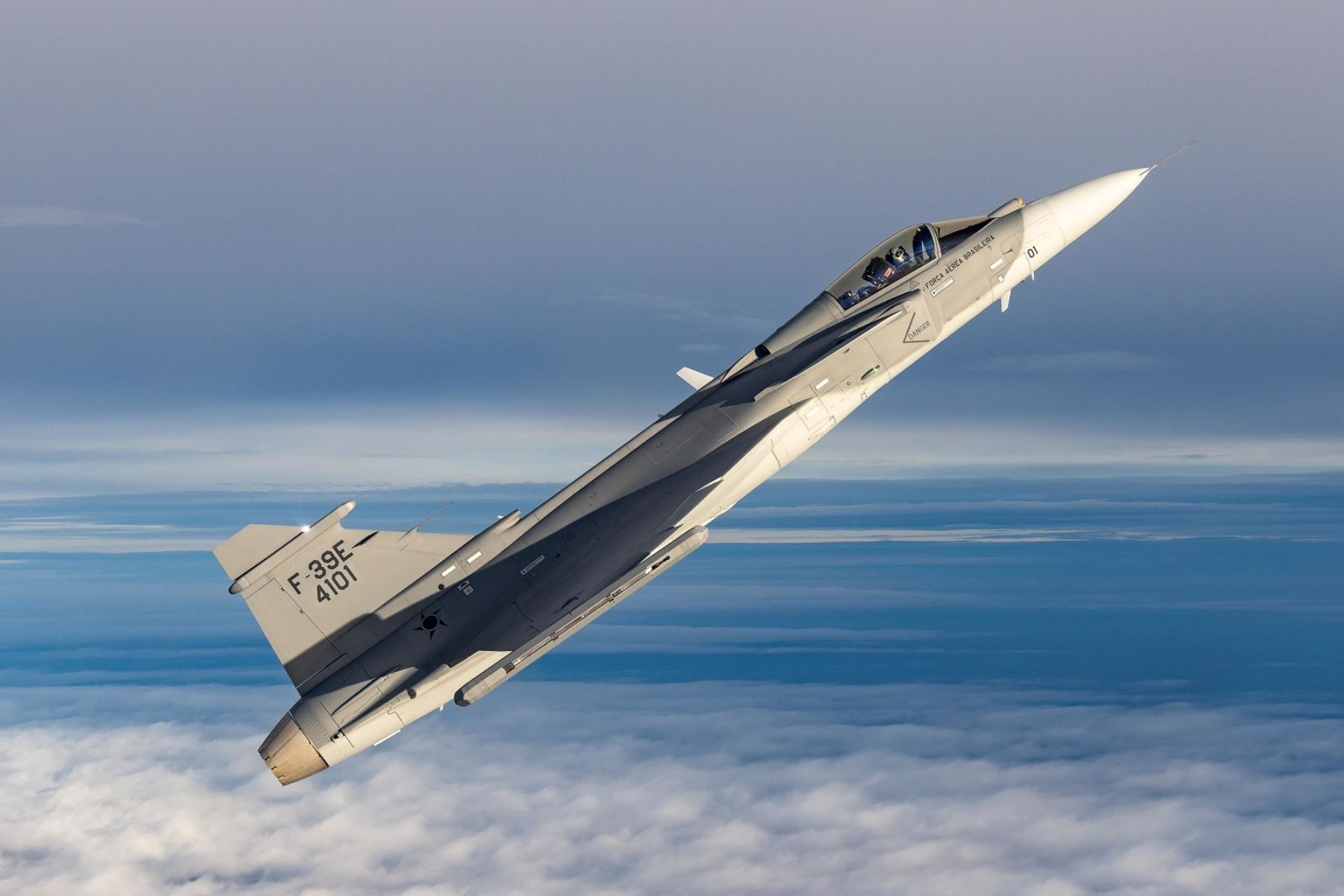Breaking News
After Success in Thailand, Saab Aims for New Order of 40 Gripen Fighters from Philippines.
The Swedish company Saab, recently chosen by Thailand to modernize its air force with its Gripen fighters, is now turning its attention to the Philippines, where it hopes to secure a significant new sale. Manila, seeking to strengthen its air fleet with around forty new fighters, is currently considering several options, including Saab's Gripen, the F-16 from American manufacturer Lockheed Martin, and the KF-21 from South Korean company Korea Aerospace Industries (KAI).
Follow Army Recognition on Google News at this link

A Brazilian Gripen E jet fighter (Picture source: Saab)
Saab's Gripen has already garnered notable interest from the Philippine military procurement authorities. A preliminary agreement was signed last year, though the final contract is still under negotiation. More recently, another agreement was signed between the two countries, indicating that the Philippines is seriously considering acquiring 40 units of the Swedish fighter. However, the selection process is not yet complete, leaving the door open for other competitors like the F-16 and KF-21.
The F-16 Fighting Falcon, developed by Lockheed Martin, is a widely used fourth-generation multirole fighter. It features a single engine that provides excellent maneuverability and a top speed of Mach 2. The F-16 is equipped with an APG-83 SABR (Scalable Agile Beam Radar), enhancing its detection, tracking, and engagement capabilities. In terms of armament, it can carry a wide range of air-to-air and air-to-ground missiles, guided bombs, and 20mm cannons for close combat. Its advanced electronic warfare systems and countermeasures bolster its survivability in hostile environments.
For the Philippine Air Force, the F-16 offers the advantage of a proven platform with well-established global logistical support. However, its high cost, both in acquisition and operation, could be a drawback for the Philippines, which needs to manage a limited defense budget.
The KF-21 Boramae is a fifth-generation fighter under development by Korea Aerospace Industries (KAI) in collaboration with international partners. Designed to be an advanced multirole fighter, the KF-21 is equipped with twin engines, offering a top speed of over Mach 1.8. It features an AESA (Active Electronically Scanned Array) radar, enhancing its long-range detection and targeting capabilities. The aircraft is designed to carry a variety of weapons, including long-range air-to-air missiles, guided bombs, and air-to-ground missiles. The KF-21 also incorporates stealth technologies that reduce its radar signature, increasing its survivability.
For the Philippines, the KF-21 represents a high-tech option potentially available at a lower cost than American or European fighters. However, due to its recent development status, it may present challenges in terms of logistical support and operational availability in the short term.

The selection process is not yet complete, leaving the door open for other competitors like the F-16 and KF-21. (Picture source: Lockheed Martin/Wikicommons)
The Saab Gripen, produced by Sweden, is a lightweight multirole fighter of the fourth-and-a-half generation, designed to be an efficient and cost-effective solution. The Gripen is powered by a single engine, allowing it to reach speeds of Mach 2. It is equipped with a PS-05/A AESA radar, offering effective detection and tracking capabilities. In terms of armament, the Gripen can carry air-to-air and air-to-ground missiles, guided bombs, and an integrated 27mm cannon. The aircraft's electronic warfare system is highly advanced, with jamming capabilities and threat detection systems.
The main advantage of the Gripen for the Philippine Air Force lies in its low operating cost and ease of maintenance, making it an attractive option for a country with limited resources. However, its payload capacity is lower than that of heavier fighters, which could limit its versatility in certain combat missions.
This project is part of a broader Philippine defense modernization program, estimated at a minimum of $33 billion. In addition to fighters, this program also includes the acquisition of medium-range defense missiles. According to the Philippine Armed Forces Chief, General Romeo Brawner, this reinforcement is crucial for the country's defense, particularly in light of increasing tensions with China in the Philippine Sea, where Beijing claims sovereignty over areas overlapping Manila's exclusive economic zone.
Currently, the Philippine Air Force has a fleet of a dozen FA-50PH light combat aircraft, which are deemed insufficient for effective territorial defense. Philippine Defense Secretary Gilberto Teodoro indicated that the tender for new fighters is still ongoing, stating that all acceptable offers are being reviewed, without naming a specific model or manufacturer.
This reinforcement of the Philippine air defense comes amid heightened regional tensions, where modernizing the armed forces has become a priority for the Philippine government. Saab, with its Gripen, hopes to secure this crucial contract, which could strengthen its position in the Indo-Pacific fighter market.


























